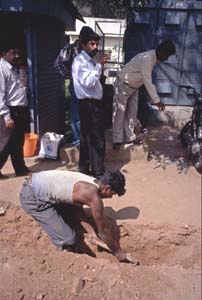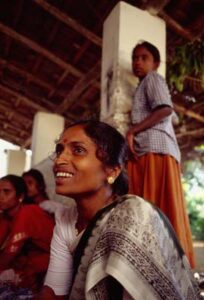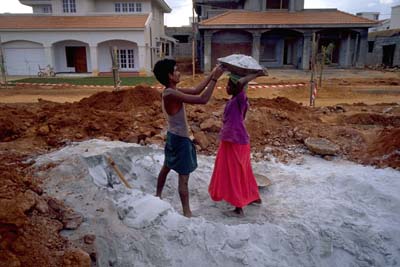
To discuss the winners and losers in globalization in developing nations such as India, most people reach for a cliché. “The rich get richer and the poor get poorer” is a widely held misnomer about globalization. Well-documented declines in poverty in poorer countries that are integrating into the global economy argue to the contrary. Research further shows that globalization reduces poverty generally, since more globally integrated economies grow faster.

For each story about growing upper class wealth there is a story about improvement in the lives of the poor. For example, there are India’s new high tech yuppies, some who made more money in the ’90s than their families earned in the previous millennia. At the same time, there was progress in places like Vietnam, which cut its poverty rate by 50%. Uganda cut its poverty rate by 40% while also doubling school enrollment. Nobel Prize winning economist Amartya Sen suggests this misunderstanding of globalization’s winners and losers is a function of the pre-existing levels of inequality worldwide, rather than any change in that inequity. Sen notes that in the first 80 years of the 20th century, inequality worldwide increased and since 1980, the rate of growth of inequality has stabilized and started declining.
Research shows that globalization affects different countries different ways, producing winners and losers, both between countries and within them. The most obvious winners are generally agreed to be the middle class and women while the obvious losers are the poor and the environment. Research shows that exactly who the losers are in globalization, especially in India, is not that easily defined.
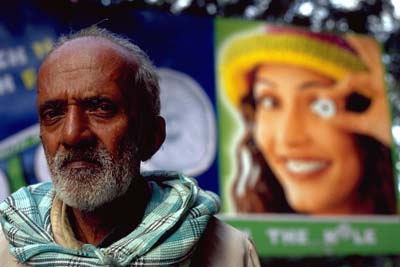
First, between countries, globalization is now largely but unevenly reducing inequality. India and neighboring Bangladesh, two nations stereotyped for their poverty are among the 24 most globalized countries. According to a World Bank study, these include Brazil, India, Thailand, Bangladesh, Malaysia, the Philippines, Argentina and Mexico. These 24 of the most successful globalizers have doubled their ratio of trade to income over the last two decades. The average number of years of schooling and of life expectancy has risen to levels near those reached by the developed nations in 1960. Throughout the 1990’s, the number of people in dire poverty in those same countries dropped by 14 percent by one estimate, making this current wave of globalization a golden age for many in these nations. However, many other poor countries, with about 2 billion people among them, have been losers in globalization. According to a World Bank study, these include Zambia, Egypt, Nigeria, Senegal, Honduras, Togo, Kenya and Pakistan. These “less globalized” nations actually traded more 20 years ago than they do today. These countries and their burgeoning populations are fast becoming marginal players in the world economy, with shrinking incomes and growing poverty.
Exacerbating this situation is the globalization of capital. The less globalized countries, with governments that are weak, corrupt or inhospitable to investment, have experienced flight of capital. By one estimate, 40 percent of Africa’s established private capital was moved outside of the continent by 1990.

India’s Mahatma Gandhi assumed his nation would have more winners than losers when he said Indians will not become any less Indian if the nation opens its doors and windows and lets foreign winds blow through. Both winners and losers can be found in India’s farming sector, revered as the traditional backbone of Indian life. The redistribution of land, a political concept imported into India, has reduced the number of large-scale farms once typical of India’s feudal landlords, greatly increasing the number of individual owners/cultivators. One study shows that the largest numbers of farmers in North India are those who own plots in sizes of between 2.5 and 14.99 acres and typically use only own their labor and that of their family. Globalization also benefited India in the so-called “green revolution,” a mix of homegrown and imported technology that massively improved crop yields and eliminated starvation in India. In this same context, the losers are the agricultural laborers, whose services are increasingly less in demand. Yet to simply declare the unneeded farm laborers as globalization’s losers is to miss the larger point. As in other globalizing nations, many of those Indian farmworkers who have been displaced by globalization’s positive changes to the agricultural sector have often migrated from risky and impoverished villages to less vulnerable, higher paid, more stable jobs in towns and cities. There they often work in such globalization-spurred jobs as urban construction or low cost manufacturing.

Another important trade-off occurs when globalization aids women’s moves towards equality. Globalization induced improvements in a nation’s standard of living raises household income, education, nutrition and life expectancy, while lowering birthrates. Such improvements in women’s lives and resulting empowerment is often seen as a threat by lower middle class men who believe such women compete with them for jobs and better lives.


By comparison, child labor in India is an example of a situation where the losers are easily defined and the winners hard to find. This is because child laborers are obviously harmed. The nation is harmed in the long term when these children are not educated. India has the largest problem of child labor in the world, with an estimated 60 to 115 million working children in India, according to Human Rights Watch. Most rural child workers are agricultural laborers. Urban children who work can be found in manufacturing, processing, servicing and repairs. Globalization most directly exploits an estimated 300,000 Indian children who work in India’s hand-knotted carpet industry, which exports over $300 million worth of goods a year. Uncounted other children work in less formal sectors, such as the making of incense, which is used both domestically and exported and is largely made by hand in individual homes. All of this happens despite an explicit prohibition in the Indian constitution against child labor and a few innovative non-governmental organizations’ programs fighting it.
Another example of globalization’s mixed benefits can be seen in migration. Most historians agree that modern globalization’s first wave occurred from 1870 to 1914. In those decades, sixty million Europeans migrated. They went to the continent’s less developed areas, to North America and to the rest of the New World, a total movement of nearly 10 percent of the world’s population. Rural to urban migration within those nations occurred in even greater and less easily defined numbers.
Today’s world is less global in terms of migration. Only about two percent of the world’s population is living in countries not of their original citizenship. In today’s globalization, the concern is not just the quantity of migrants but also the quality. The most motivated and potentially successful migrants are also the most likely to leave a given country, robbing developing nations of important human resources. For example, almost a quarter of the graduates of India’s four major institutes of technology migrate to the United States until recently, America had more Indian technological talent than India. Asians started as much as 40% of the new startups in Silicon Valley during the dot com boom of the ’90s, with the overwhelming majority being Indian. The number of Indians living outside India, the so-called Indian Diaspora, is estimated to be 15 to 21 million worldwide, second in size only to non-resident Chinese. These Indians, known as Non Resident Indians, or NRIs, are the third largest foreign investors in India. They are spread across the world and often are better educated than the population of the dominant cultures where they live. Though India benefits from the funds sent to their families, from their investment capital, what they really need are their skills in science, technology, medicine and politics. This longtime brain drain, is slowly changing as a growing number of NRIs are returning to India to set up businesses and raise families.

In its national mythology, India still thinks of itself as a land of villages, but India is increasingly dominated by its cities. Returning NRIs, underemployed farm laborers and newly empowered women have all contributed to explosive growth in India’s cities. Well over a third of all Indians currently live in cities and by 2010 it is estimated that number will exceed half, making India home to one of the world’s largest urban populations. The highest rate of urban growth has been in provincial cities, many built in stretches along the national highways. The homelands of India’s ‘new middle classes’ are the more than 200 cities with a population of over 100,000.
This growth creates urbanization’s winners, for example the growing middle class, but it also creates losers, primarily the urban environment. Sprawl, according to one report “has shifted from an engine of growth to a force that threatens to inhibit growth and degrade our quality of life.” Bangalore, in southern India, where much of this project’s work was done, sits 3,000 feet above sea level. It was once a garden city with lakes and vast green spaces and is now home to about 5 million people. It is a mass of aging single-story houses and shops, gray concrete apartment buildings, collapsing colonial offices, and shocking slums. Despite periodic islands of modernity, glass faced buildings and high-end boutiques, the urban sprawl and burgeoning population make Bangalore one of the most polluted cities in India. India’s Silicon City has done little to provide viable mass transit in a nation where most Indians do not own cars. When the software company Wipro needed bus transportation to carry hundreds of workers between the city center and its offices, the company was forced to hire its own bus service. Wipro, not the city of Bangalore or the state of Karnataka, became the largest bus contractor, providing the transportation infrastructure that governments usually organize.
An indirect but equally horrifying result of globalization’s urban growth is the elevated incidence of lead in the environment and especially in the blood of children. According to several studies conducted across India, over 50% of urban children under 12 years old have elevated blood lead levels. While anyone with excess blood lead levels is subject to heart, kidney, liver and central nervous system problems, in children excessive exposure to lead decreases IQ, lowers learning ability and inhibits intellectual growth. Despite the introduction of unleaded fuel in India, the presence of lead in the urban environments continues, as lead is frequently recycled. Across Bangalore and India, lead-acid batteries are broken down for their chemical components in small scale, unregulated operations lacking any regulation or pollution controls.
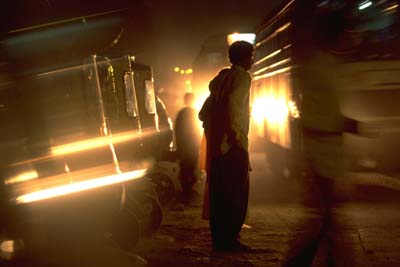

Lead battery breaking is one kind of environmental damage that has both local and global causes and consequences. The leather industry, is another large, unregulated, small-scale sector that is highly harmful to the environment. In the Vellore district of Southern India there are some 6,000 tanneries. The Palar River, which runs through that district, regularly has chocolate-colored water as tannery effluents leach into the water, contaminating it. In 1999, exported leather brought in $17 million. Another source of environmental damage across South Asia is ship breaking. Up to 90 % of the world’s annual crop of 700 condemned ships end their lives on the beaches of Pakistan, India, and Bangladesh. When abatement costs become too high, the environmental damage becomes economically if not literally irreversible. Foreign-owned plants in developing countries, are in not the biggest polluters. They tend to pollute less than indigenous plants in the same industry. This because most multinational companies adopt uniform standards globally, standards that are usually better than those set by local governments.
Because of India’s previously centralized media structure, the satellite TV revolution has been more rapid, disruptive and far-reaching than elsewhere. Globalization has provoked outrage among conservatives in India with the arrival of satellite television such as Rupert Murdoch’s STAR TV, MTV and other foreign channels. India, a nation where cinematic kisses were only recently permitted, was shocked when viewers first encountered kissing, lovemaking and nudity. India was pressed to accept in five years changes that the West slowly accepted over several decades. Particularly in the cities, values, attitudes and behavior are in a state of tremendous flux as sex becomes public. Much to the dismay of Indian traditionalists, this media driven sexual revolution is not solely imposed on India. Indian advertisers are using explicit images on television, in movies, videos, magazines and advertisements. One sad result is that a recent study showed the number of teenage abortions rising by 20 per cent in the space of a year in the southern state of Kerala.


At a moment in history when India is enjoying unprecedented economic growth, the nation also is encountering a surge in dowry deaths and bride burnings. A dowry is a price a bride and her family are expected to pay to the groom and his family in some, but not all, of India’s various ethnic communities. The giving or receiving of dowry is illegal, though such laws are rarely enforced. Increased consumerism pushes some families to expect more of the conveniences advertised daily, raising dowry demands to impossible levels. Demands for dowry similarly go up for a groom with education, western citizenship or in case of perceived faults in the bride, such as darker skin. Demands that are not met often result in suicide or mysterious “stove-burst” accidents, usually within the first two years of marriage. Dowry burnings usually mean dowry deaths as substandard hospitals infect burnt women. The victims and perpetrators of this violence are from all class backgrounds and members of different religions. Research by women’s groups in Bangalore verifies high numbers of unnatural deaths among newly married women from dowry-related violence, with the perpetrators largely acquitted. These figures far outnumber traffic-related deaths or any other category of preventable avoidable deaths. In the city of Bangalore alone, 1,133 women died in murders, suicides and accidents in 1997.
Female fetuses experience similar gender-based violence. Despite media campaigns and legal prohibitions, demands for dowry create hostility towards the women before their birth. Gender clinics advertise using the slogan: “Spend 500 rupees now, save 50,000 later.”
While modernity, according to social theorists, is said to free individuals from existing identities, Indians are especially fearful of the new identities pushing out older ones. India’s superficial modernity, exemplified by those who adopt western lifestyles while revering conservative tradition, has created a societal dissonance. India has clearly has a smattering of modernist characteristics yet one would hardly call India modern. Modernity reduces the importance of birth status and increases the value given to education or other merit based achievements. The ability to empathize with and share in another’s plight is at the heart of modernity. Lacking it, modernity degenerates to commercialism. While India is slowly putting consumer items into the hands of the masses, whether it is becoming modern is another question.
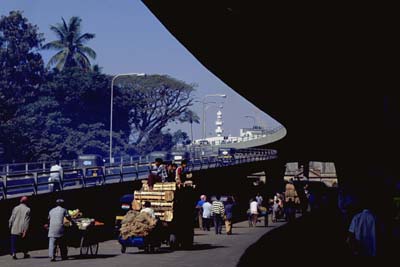

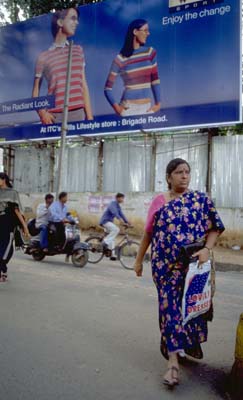
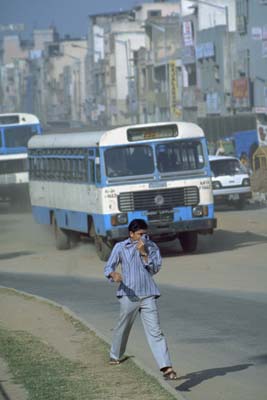
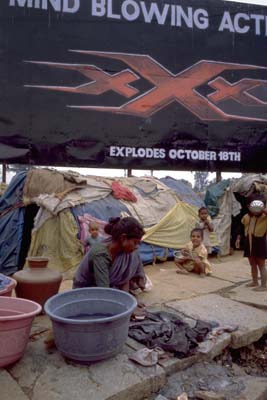
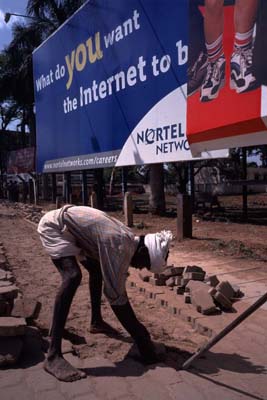

©2004 David H. Wells
David H. Wells, a freelance photographer from Providence, RI, spent his Patterson year documenting India.


